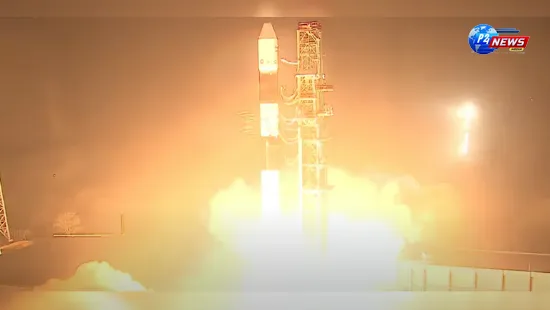Dr. S Somanath, chairman of ISRO, recently declared that the agency has successfully achieved the "right orbit," marking a significant milestone in their ongoing space exploration efforts. This achievement highlights ISRO's commitment to advancing space technology.
The evening sky above Sriharikota, Andhra Pradesh, was aglow at 10 PM on Monday, marking a significant milestone with the 62nd launch of the Polar Satellite Launch Vehicle (PSLV). The countdown, which kicked off 25 hours earlier on Sunday, culminated in a spectacular liftoff from the First Launch Pad at the spaceport. The rocket surged into the darkness, leaving a trail of brilliant orange flames that illuminated the night. In a mere 15 minutes, it successfully deployed two twin space docking satellites into orbit.
Amid cheers and applause, Dr. S. Somanath, the chairman of the Indian Space Research Organisation (ISRO), proudly declared that the mission had achieved the "right orbit" for the satellites.
At this juncture, the final stage of the launch vehicle was actively working to adjust its orbit for the POEM (PS4-Orbital Experiment Module), which is designed to carry out experiments in the vast expanse of space.
ISRO has revealed that the upcoming space docking experiment is tentatively slated for January 7. During this event, the two satellites will rendezvous in space while traveling at astonishing speeds, approximately ten times faster than a bullet.
Designated as Spacecraft A (SDX01) or the 'Chaser' and Spacecraft B (SDX02) or the 'Target,' these two crafts are set to merge at an altitude of around 470 kilometers, maintaining synchronized speed and distance.
A successful docking maneuver, followed by undocking, would position India among the select few nations globally that possess advanced space docking technology, as highlighted by ISRO.
In an exclusive interview with NDTV, Dr. Somanath elaborated on the intricacies of the docking process. He explained, "When multiple objects are in space and require unification for a designated task, a docking mechanism is essential. Docking refers to the method by which two space entities converge and establish a connection."
He further explained that various methods can facilitate this docking process, which includes soft mechanisms, hard mechanisms, or pressurized compartments intended for human transfer.
"Take, for instance, the International Space Station where crew modules dock seamlessly with the station, equilibrating pressure for efficient crew transfer," he noted in his discussion with NDTV.
This marked the 99th rocket launch from the Satish Dhawan Centre in Sriharikota, and the mission achieved a magnificent lift-off, positioning the SpaDeX satellites in optimal orbit.
In the forthcoming weeks, the next phases—including the crucial docking procedure and an extensive series of 24 experiments—are set to take place, promising to advance India’s capabilities in space exploration.
With this achievement, ISRO, which commenced 2024 with a PSLV launch on January 1, concludes the year on an impressive and high note.
















Comments 0